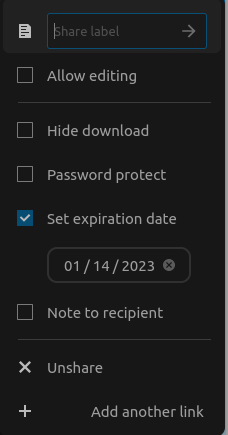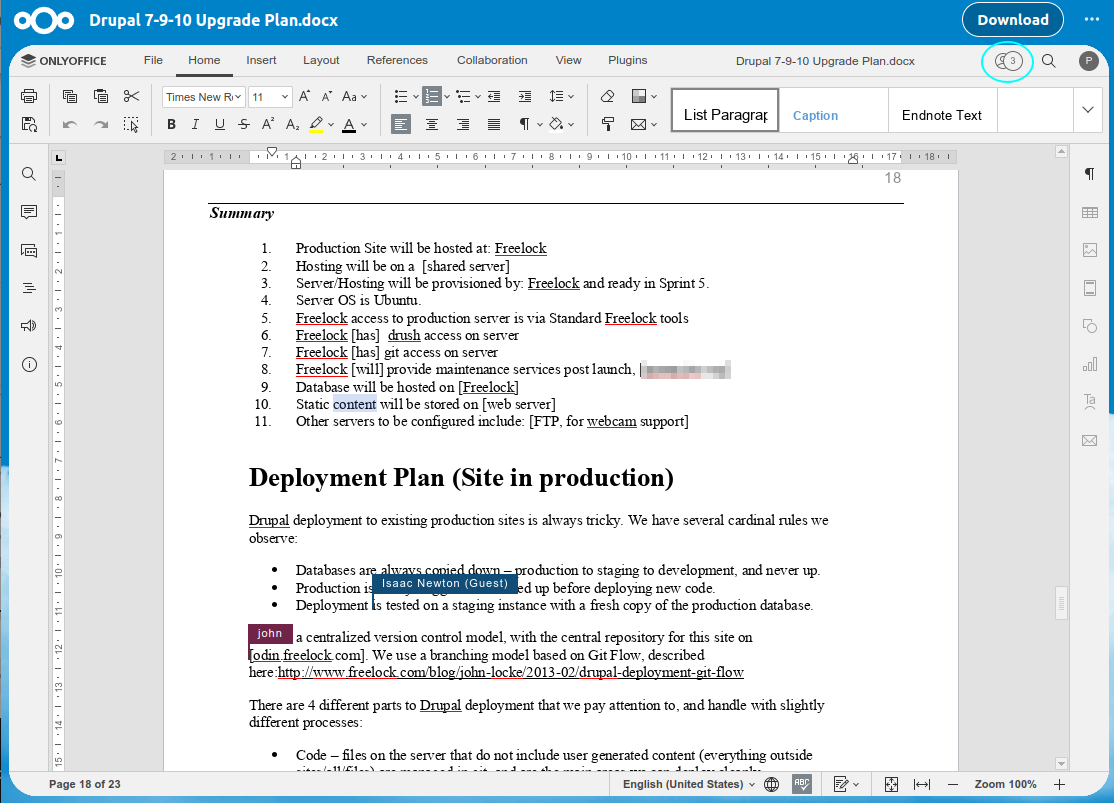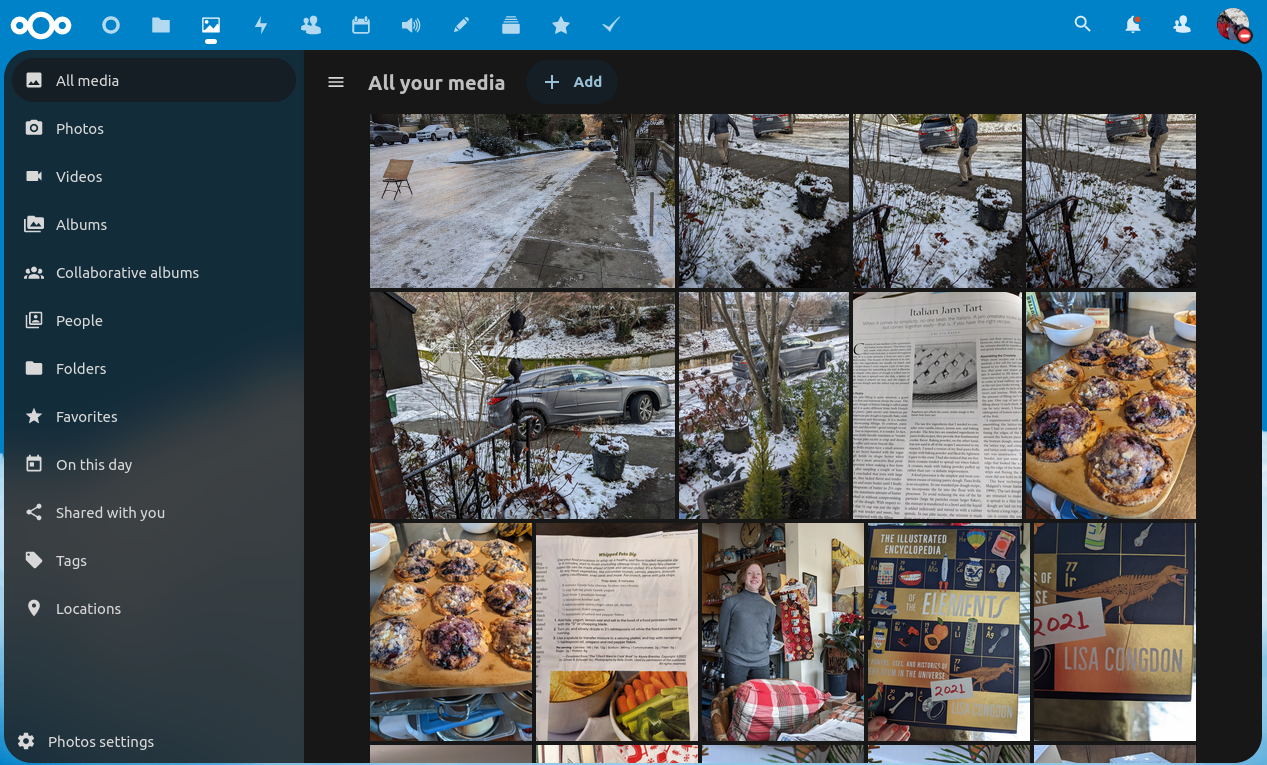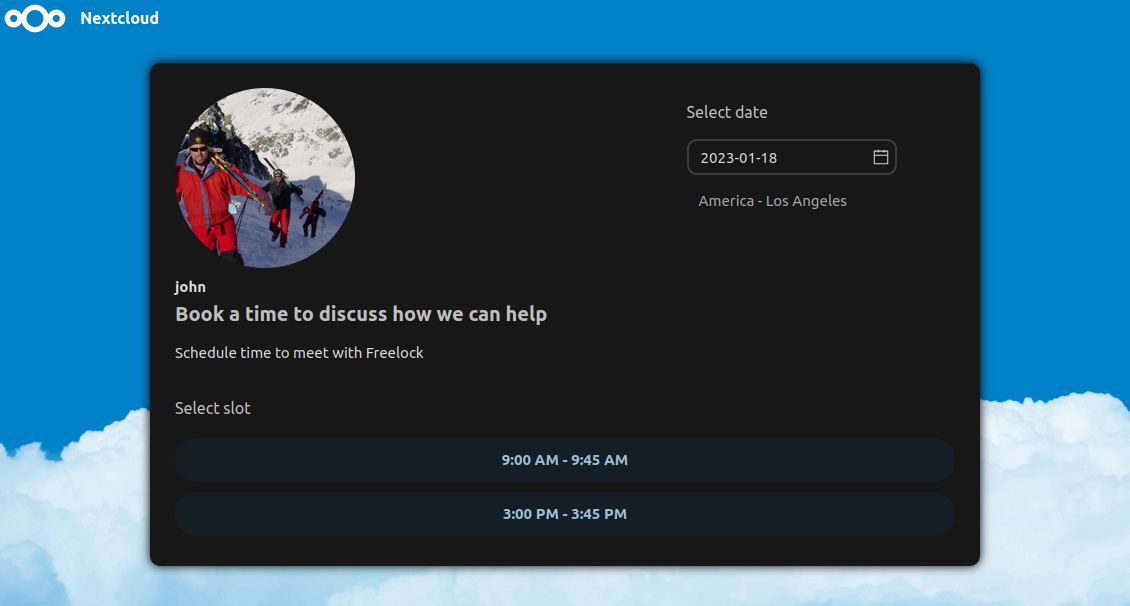To wrap up our round-up of awesome open source packages, and to get back to business, our final selection for the year is NextCloud. NextCloud started out as an open source Dropbox replacement, but today it can also replace Google Office, Office 365, and much more.
At its heart, NextCloud is about document sharing. You can easily sync files across all your computers, and make them available on your mobile phone. You can pick any set of folders to sync on each device.
But where NextCloud excels is sharing outside your organization. You can easily create anonymous drop folders, share folders through a single link, password protected or not, and add an expiration date.
The people you share with don't even need an account! Just send them a link and they can start interacting with you straight away.
But that's just the start of what NextCloud has to offer.
Easy Collaborative editing
If you share a document or spreadsheet with anybody, even those just using a link, if they have editing access you can load the document in a collaborative editor. There are several different options for this, installable with various NextCloud plugins.
The best one we've found is called OnlyOffice, which has decent compatibility with the same file formats Microsoft Office 365 uses.
With OnlyOffice loaded inside NextCloud, you can easily invite people to work on documents at the same time!

Automatic photo backup
Another really great reason to use NextCloud is for your photos. The Android and iOS apps can be set up to automatically back up all the photos you take to your cloud instance. In our family, we share each other's photo folders to other family members, and they all show up on a photos tab in NextCloud:

NextCloud has recently added Albums and Collaborative Albums to the options, allowing you and others to create albums to share with a particular group, or make public.
Schedule an appointment
I wrote about switching from Google Calendars to NextCloud calendars a few months back, but NextCloud calendars also have a scheduling side we've started using. Instead of going back and forth a bunch of times to find a timeslot that works, you can set up a general appointment slot, with a bunch of different options. You can provide a general description, standing location (e.g. a persistent Zoom meeting), a duration, any time you need before or after an event, and a maximum number of slots per day. You can designate any set of calendars to check for conflicts, and how far ahead someone can book.
The result is a link you can share to allow people to set up a meeting on your calendar.

Another Federated Service
One final benefit to highlight with NextCloud, is that individual NextCloud instances can talk to each other. If you have a NextCloud server, and I have a NextCloud server, I can share documents directly with you, through your instance, without making them available to the public or through a link.
Again, this is just scratching the surface of what you can do with NextCloud. There are hundreds of add-ons available, to integrate with all sorts of other services. And like the other software we've highlighted, it's all free/open source software you can run yourself, or hire any number of vendors to run and manage for you.
NextCloud is an amazing software package for all kinds of business and personal needs. Before you go sign up for some sketchy software as a service that might get shut down after getting acquired, see if you can find a way to do it with free/open source software. For a surprising number of things you need to do in your business, you can do them in NextCloud.

Add new comment